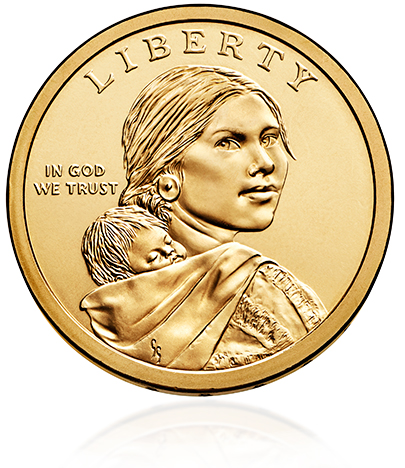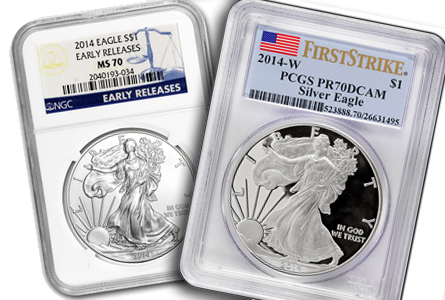 The Real Diehl is a regularly-appearing column by former United States Mint Director Philip N. Diehl, exclusively for CoinWeek ………..
The Real Diehl is a regularly-appearing column by former United States Mint Director Philip N. Diehl, exclusively for CoinWeek ………..
Are There Really “First Strikes”, “ Releases”, and “Early Releases®”?
I read with interest Michael Bugeja’s July 7 CoinUpdate article about “first releases” and “Early Releases®” and the readers’ comments that followed.
I’ve been asked about these labels, and I might be able to shed some light on the subject. My knowledge is based on my tenure as director of the Mint from 1994-2000.
I want to start by saying I have not followed NGC’s and PCGS’s practices related to these labels. For example, I do not know how they define “first” and “early” or how they distinguish “firsts” from “earlys”. Reasonable minds could differ on where these lines should be drawn. My observations do not reflect an opinion regarding these practices.
No doubt, some things have changed at the Mint since my tenure ended 14 years ago, but I think much of my experience applies today. However, I’m happy to stand corrected by those who have more recent information about Mint practices and procedures.
First, let’s deal with circulating coinage. With rare exceptions, “first strike”, “first release”, and “early release” designations for circulating coins are dubious. The exceptions are the very rare instances in which the Mint held formal first strike ceremonies for a new coin.
For example, during my tenure, first strike ceremonies were held before each new 50 States Quarter was released. These events were excellent means of generating media coverage and public enthusiasm for the 50 States Quarters program in its early stages. Only a very few coins were minted during these events, typically struck by the coin’s designer, state dignitaries, members of Congress, and Treasury officials. No other coins were considered “first strikes”. I do not know whether these coins were actually the first coins of the design to be struck, though I suspect not. However, they were certainly among the earliest struck and the earliest released, and they might have been the first coins struck on the die that was used. Moreover, the quality of the strike was probably enhanced by the fact they were not produced in quantity.
 Also, when the Mint invited the public to submit design concepts for the new Golden Dollar, we offered the winner compensation of $5000. Of course, Glenna Goodache’s depiction of Sacagawea and her infant son Jean Baptiste was selected. As part of our public education and media campaign for the coin (which, by the way, was mandated by Congress and paid for itself through increased seigniorage), we delivered the $5000 to Ms. Goodache at a press conference, and did so with very early strikes of the coin. Again, I cannot say they were the very first coins struck by the Mint, but they were certainly very early strikes and likely to be the first struck on the particular dies that were used.
Also, when the Mint invited the public to submit design concepts for the new Golden Dollar, we offered the winner compensation of $5000. Of course, Glenna Goodache’s depiction of Sacagawea and her infant son Jean Baptiste was selected. As part of our public education and media campaign for the coin (which, by the way, was mandated by Congress and paid for itself through increased seigniorage), we delivered the $5000 to Ms. Goodache at a press conference, and did so with very early strikes of the coin. Again, I cannot say they were the very first coins struck by the Mint, but they were certainly very early strikes and likely to be the first struck on the particular dies that were used.
Another exception: when we were planning the launch of the Golden Dollar we conducted market research with the Federal Reserve and major banks to ensure the successful distribution of the coin. They threw us a curveball by indicating they had little interest in ordering the coin, considering their experience with the Susan B. Anthony dollar. We also knew they were unfriendly to a dollar coin for business reasons.
So, I went out to find an alternate distribution channel that would allow us to put the Golden Dollar into commerce despite the banks’ resistance. Wal-Mart stepped up and, contrary to conventional wisdom, the coin’s launch was hugely successful. The Golden Dollars distributed through Wal-Mart were early releases and some of them could be considered first strikes, but they were mixed in which millions of other early strikes.
But as for the other 99.99999% of circulating coins, there is no way to track first strikes.
Mr. Bugeja is correct that circulating coins are, generally speaking, shipped first in (the vault)/last out, though, again, there are exceptions, such as when the Mint is struggling to meet coin demand and shipping coins immediately after minting. Early-strike coins are further mixed at the Federal Reserve’s coin depots, where they are likely to go through a second first in/first out process. Moreover, new coinage is often mixed with old coinage recycled through the Fed. By the time early-struck coins reach banks, they have been thoroughly randomized.
 In my day, the situation was more complicated with proof and commemorative coins. When I began my term as director, the Mint required months to fill customer orders. In these cases, early strikes were as likely to be among the last shipped as the first. In 1994, we launched a massive, multi-year project to deliver coins within days of receiving an order and succeeded beyond anyone’s expectations, a success that I’m not sure has been maintained in the intervening years. During these years, early-release coins were very likely to be early strikes, as we packaged the first orders very soon after the first coins were struck.
In my day, the situation was more complicated with proof and commemorative coins. When I began my term as director, the Mint required months to fill customer orders. In these cases, early strikes were as likely to be among the last shipped as the first. In 1994, we launched a massive, multi-year project to deliver coins within days of receiving an order and succeeded beyond anyone’s expectations, a success that I’m not sure has been maintained in the intervening years. During these years, early-release coins were very likely to be early strikes, as we packaged the first orders very soon after the first coins were struck.
Also, in the case of commemorative coins, it was common practice to hold first strike ceremonies to launch the marketing campaign for a new program. As I said above regarding 50 State Quarter first strike ceremonies, only a very few coins were minted during these events, typically struck by officials from the program’s sponsoring organization, celebrities and government officials associated with the sponsoring organization, and Treasury officials. No other coins were considered “first strikes”. I do not know whether these coins were the first coins to be struck. I suspect not, though they were certainly among the earliest struck and the earliest released, and they might have been the first struck on the die that was used. Moreover, the quality of the strike was probably enhanced by the fact they were not produced in quantity.
As for proof sets, proof Eagles, and other numismatic products, they likewise benefitted from improvements in our order fulfillment process. Therefore, like commemorative coins, early releases were very likely to be early strikes, as we packaged the first orders very soon after the first coins were struck.
So, to summarize, first strike, first release, and early release circulating coins are impossible to track through the Mint’s production and Federal Reserve distribution process, with some exceedingly rare exceptions. As for numismatic products, the ability to identify first strikes, early strikes, and early releases varies by the specific coin program and the year in which the coin was released.
In other words, when it comes to First Strike Coinage… it’s complicated.




